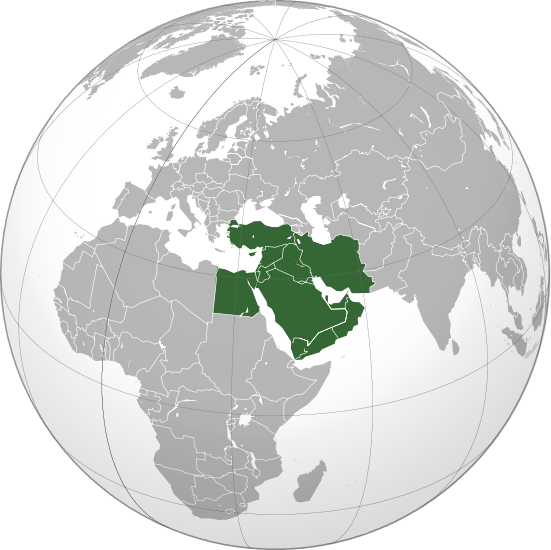I have discussed various nuclear projects in different parts of the world but usually focused on a particular country. In today’s blog, I am going to talk about the Middle East and their ambitious plans for nuclear power. There are plans for investing two hundred billion dollars to building thirty seven new reactors across the region in the next fifteen years. This would represent an almost ten percent increase in the number of operational reactors in the world today.
I have already mentioned the new nuclear project in Turkey at Sinop on the Black Sea in prior posts. The French company Areva and the Japanese company Mitsubishi Heavy Industries are collaborating on the twenty two billion dollar project to build Turkey’s second nuclear power plant. I have reservations about the technical competence of Mitsubishi Heavy Industries following the rapid failure of two steam turbines they built for the San Onofre power plant in California.
Jordan will decide soon whether a Russian consortium or a French-Japanese consortium will build two gigawatt reactors in Amman at a cost of about sixteen billion dollars. Jordan is also in the process of building a reactor for research and training. Jordan is a very dry country and some critics of nuclear power have raised the question of how Jordan is going to find the water to cool nuclear reactors.
Egypt has decided that nuclear energy is critical to its future supply of electricity. It is working with the Russians on studies at the Dabaa nuclear station. Lacking oil, natural gas and coal, Egypt plans to exploit deposits of uranium to supply fuel for new reactors. Egypt has requested bids to build its first nuclear power plant which will utilize a Generation Three type reactor employing the latest proven nuclear technology for efficiency and safety.
ENEC, the company that owns and operates Abu Dhabi’s nuclear power plants plans to spend twenty billion for four new nuclear reactors to be operational by 2020. The United Arab Emirates government has worked hard to sell the idea of nuclear power to its people and a recent poll found that eighty two percent of the people supported nuclear power. Their need for new sources of energy is not as acute as Jordan and Egypt because of their huge oil and natural gas reserves.
Although Saudi Arabia has committed to expanding renewable energy sources, they are also committed to building nuclear reactors for electricity generation. They are going with the Generation Three design type and expect to have their first reactors online by 2020.
Just looking at the numbers in this article, it would seem to me that the countries of the Middle East may be a little optimistic about the cost of thirty seven nuclear reactors. The three projects for which I have quoted actual dollars amount to about sixty billion dollars. That estimate accounts for six or seven reactors. Figuring an average of about ten billion dollars per reactor, the cost for thirty seven reactors should be more like four hundred billion dollars. While the oil rich countries such as Saudi Arabia and the UAE can absorb significant cost overruns, countries like Egypt and Jordan will have a more difficult time. Availability of cooling water will also be a problem in countries other than Jordan.
There is also the issue of corruption in Middle Eastern countries. The countries mentioned above are not any more corrupt than global averages except for Egypt which is among the third most corrupt nations. Even an average level of corruption is very dangerous when it come to constructing, operating and regulating a nuclear power plant. The countries of the Middle East would be much better off working on renewable energy sources such as solar and wind power than spending money on dangerous and expensive nuclear power.


